This Page is for the basic information about drekir as a species in the biological and ergonomic aspects. So their general basic anatomy, size and weight, diet and life cycle, ergonomics, physiology and other relevant topics.
Size and Weight
The size and weight of a drek varies slightly on their breed so this will cover more of the broad averages of how big drekir get in terms of their height and their weight ranges.
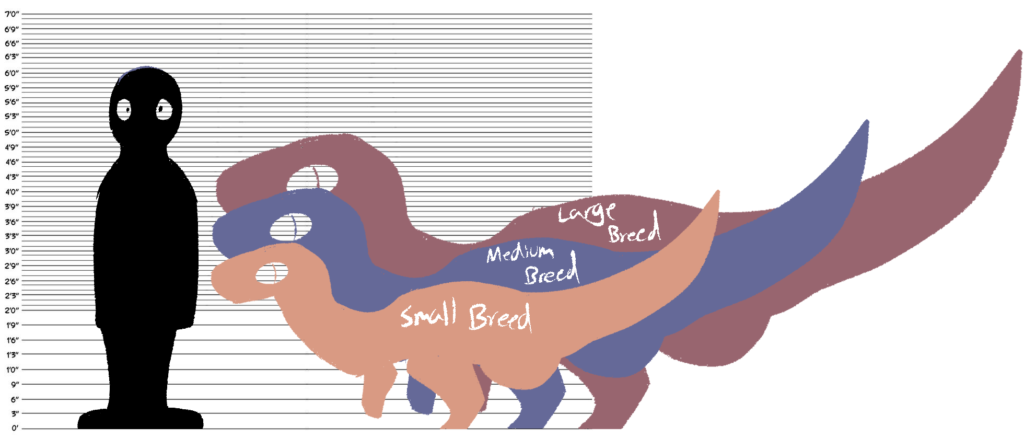
It is important to keep in mind that these are averages and not necessarily representative of each individual drek.
Size: Drekir are relatively short compared to humans, the smallest of drekir may only stand around 3 1/2 feet and the largest breeds of drekir tend to be as tall as 6 feet. In metric measurements that would be 1.1-1.7 meters in height. Though your average and most common sized breeds of drek will only reach about as high as 4 1/2 feet on average, or around 1.4 meters.
Weight: The smallest of drek breeds may on average weigh in at only 140 pounds and the heaviest largest breeds of drekir may weigh in around 350 pounds, or in metric measurements around 55-115 kilograms. Your average drek in the more common normally sized breeds may weigh in around 200 pounds, or around 90 Kilograms.
Sexual Dimorphism and Drekir
like the other intelligent draconic species known collectively as the Ẽldimor, drekir are not a heavily sexually dimorphic species with very few pronounced distinctions between males and females. The only practical distinctions between males and females relate to reproduction both physiologically and in reproductive behavior.
Food and Diet
Drekir are Mesocarnivores and can subsist off of a mixed diet of meats, fruits, starches and vegetables. Drekir do require at least 50-70% of their diet to be some form of meat.
This can be red meat, poultry, eggs, insect meat, blood, bones, or any other type of meat or meat product. Drekir are also lactose intolerant and are incapable of digesting cereal grains. Though they are able to digest tubers and starchy plants such as potatoes, roots, and squash. So generally most of the typical drek diet comes mostly from meat and products there of with a smaller amount of local fruits, vegetables and tubers.
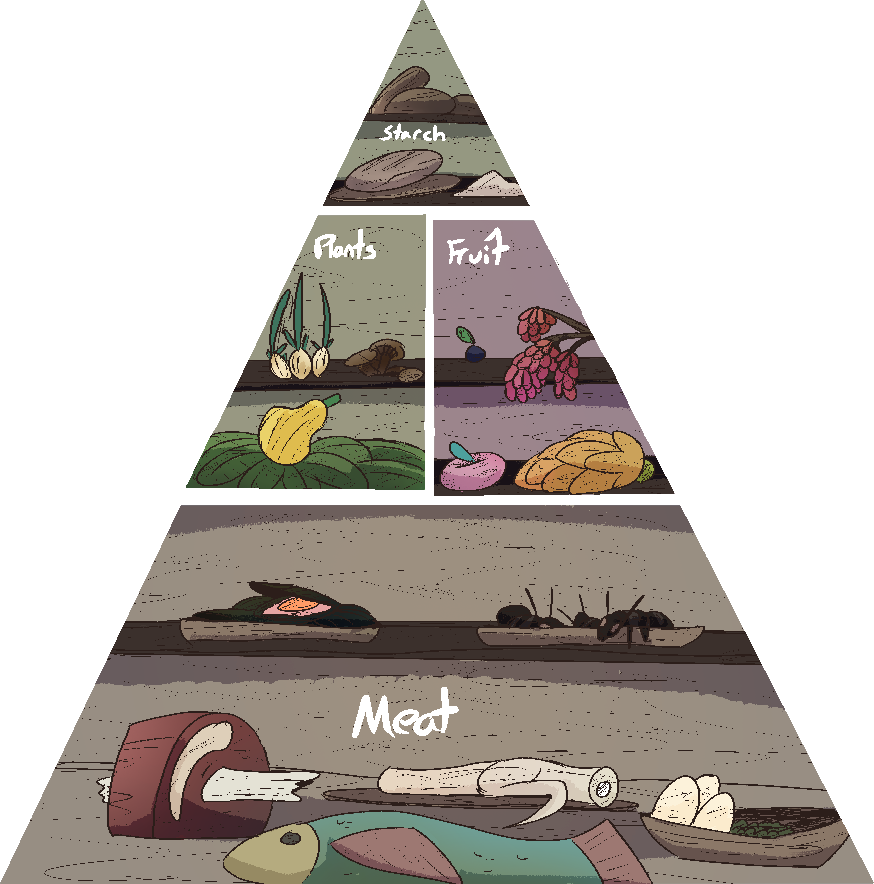
This can be any sort of meat however, red meat, poultry, eggs, insect meat, blood, bone marrow, any sort of meat product. Notably drekir can live off of a meat only diet, though cannot live without meat and meat must make a majority of their diet. The rest of a dreks diet tends to consist of a mix of vegetables and fruits. Drekir can also eat starches, though cannot process gluten, which limits their sources of starch to starchy roots, tubers, and pseudograins. So normally with respect to starch it is sometimes not eaten at all, and if it is it cannot serve drekir as a staple food, but rather a tertiary food. Likewise drekir are completely lactose intolerant… though so are all dragons.
The Dragonscape is a place inherently absent of lactose so nothing really can eat dairy products without becoming severely ill.
Drekir and Ectothermy
Most drekir are ectothermic, or in other words cold blooded. Being cold blooded provides drekir a fair number of biological advantages and disadvantages in their day to day lives. There are only three breeds of drekir that are warm-blooded unlike the vast majority of drekir. Those breeds are Arctic and Alpine drekir, with the sole subspecies breed being the Highland Himir
One of the larger advantages is that drekir do not have a constant metabolic rate such as humans do as they do not have a constant internal body temperature. As such drekir do not need to eat nearly as much as the average human, on a typical day a drek may only eat upwards of 700-1100 calories.
Drekir can further reduce the amount of calories they burn through reducing their physical activity and staying warm. This makes drekir notably resistant to starvation, with the average drek being able to survive for over 60 days before succumbing to their starvation. Arid drekir are notably more resilient, capable of going without food for upwards of 3 months before dying of starvation.
Drekir, thanks to their ectothermy and particularly strong digestive systems are also more tolerant of food that might be uncooked, rotten or bad. So raw meat and partially rotten meat, untreated water, and other sorts of foods that would easily make a human sick are generally safe(ish) for drekir to eat barring more intense rot in the food in question. So it is also quite normal for drekir to safely eat food in spite of it being past the point in which a human would not be able to safely eat it.
However, cold blooded drekir are also very vulnerable to extreme heat or cold and inclement conditions can prove dangerous and even lethal. Drekir are particularly vulnerable to hypothermia. As a dreks body temperature drops their muscles begin to move slower and slower, their reflexes begin to slow, and the cognitive abilities of that drek will begin to decline. At freezing temperatures a cold blooded drek can lose consciousness within 20 minutes, it is typical for a drek that is not pulled from those cold temperatures to die shortly after within 5-10 minutes. Hyperthermia is also a larger threat to a drek than a human might appreciate. It is easy for drekir to overheat and if they are unable to cool down externally then they could easily suffer from heat sickness or a heatstroke. Prolonged exposure to temperatures that are above 85-110 degrees Fahrenheit or 32-45 degrees Celsius (varies by breed) can cause a decline of cognitive ability, physical sickness and dehydration, and eventually death over the course of 6-7 hours.
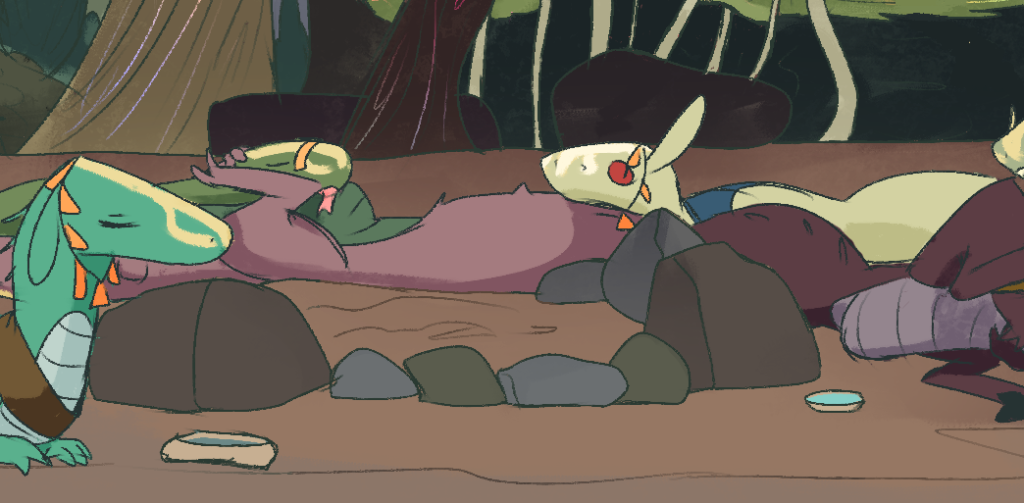
Thermoregulation and Basking
To help combat their lack of a consistent internal body temperature and their vulnerabilities to extreme heat and cold conditions drekir have a variety of instinctive and developed cultural behaviors.
But for now lets keep this focused on biological and instinctive behaviors, To deal with cold conditions Drekir are instinctively driven to bask (more on that below) and seek out external sources of heat to warm their bodies up. Consuming warm foods and liquids is also a common tactic. Drekir are also known to naturally shiver to try and warm their bodies up and to cluster together in cold conditions. To protect themselves from the heat drekir instinctively pant to help cool off. Drekir that are hot are also instinctively driven to consume cool foods and liquids, cool off in the shade or submerge themselves in cool water. In more desperate situations drekir might be roll in dirt or mud to try and cool themselves off.
Pheromones
Drekir produce a lot of pheromones that help communicate with other drekir and different pheromones are secreted in different ways throughout the body. Some pheromones are secreted out of saliva, others are secreted from between the scales, etc.
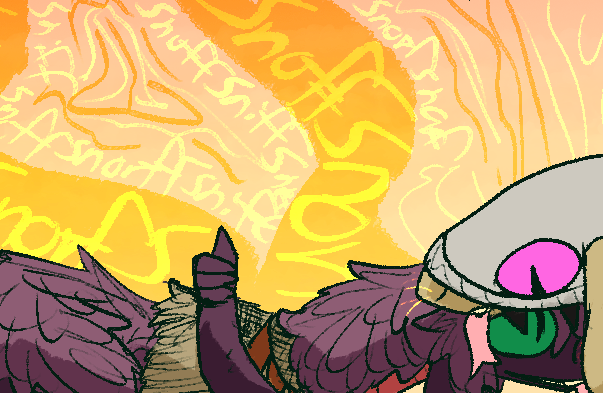
Pheromones communicate a lot of social and physical information about a drek. Everything from a dreks rough age group, if they are healthy, injured or ill, if they are pregnant, in a fertility period or receptive, if they are hungry or dehydrated etc. Additionally it can convey important social information. For example, if a drek is frightened then they will naturally secrete a pheromone signaling for other drekir to be alert for danger, and if a drek is sad it can influence other drekir emotionally.
Drekir, as discussed on this site are very different creatures from humans and that extends to their physical abilities. In some ways they are stronger than humans and in some ways they are weaker than what I feel is a fitting comparison, humans.
Drekir Ergonomics
Physical Strength
Drekir were designed by the sivilão to function very much like pack animals and so it is no surprise that their bodies reflect that. Most of a dreks core muscle groups are in their back and leg muscles which allows them to carry and pull many times their own body weight. In optimal situations a drek can pull up to 9x their own body weight and carry upwards of 6x their own body weight at the maximum.
But while a dreks back and legs are incredibly powerful, they do not compare well to humans in regards to arm strength and upper body strength, with most healthy drekir comparing more to a 15 year old human boy in respects to arm strength. This is both due to smaller muscle growth in the arms relative to humans, the inability to utilize their whole body effectively in many applications, and thanks to how short their arms are. The exception is in situations where a drek can use their legs as the main driver of energy, in which they can at least match a humans capabilities.
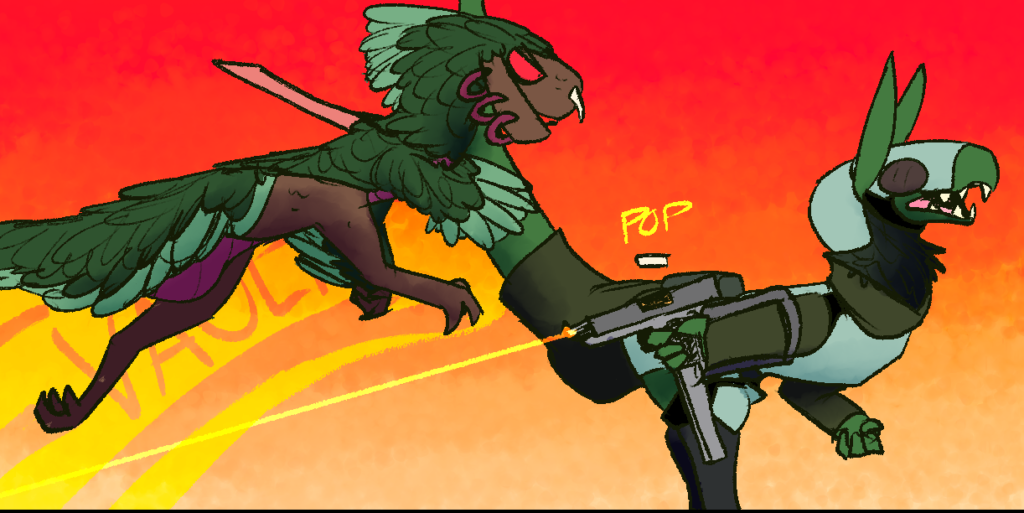
Drekir Speed, Agility, and Maneuverability
Drekir are fast compared to humans, particularly when moving forward your average moderately fit drek can break 20mph and a well trained runner can break upwards of 30mph. A drek of most any state can almost always outrun a human.
However their biggest problems come in regards to maneuverability, drekir are mostly designed to only go forward. While they can backpedal reasonably well it takes a drek a lot of space to try and turn, requiring them to slowly turn in a forward moving arc. This inability to turn efficiently often gives drekir notable problems in cramped or claustrophobic spaces.
Endurance and Cardio
Drekir and humans are both good with various types of endurance, though in different aspects. Humans have generally better stamina in physical activities such as long distance runs and sprints where as drekir are generally only capable of high speed but short bursts of exertion for running. By contrast drekir generally fare a lot better in regards to walking long distances and carrying heavy loads while doing it then what your average human might be able to handle. So overall the two species are relatively similar in regards to stamina just slightly better in different areas.
The Primary Senses of the Drekir
Drekir possess most of the same senses as humans do, sight, smell, hearing, touch and taste among the other various senses that we possess as humans. Though the way those senses interact with eachother and the world does vary slightly with drekir being more sensitive in some aspects and less sensitive than others.
Drekir possess the same number of rods and cones as humans do and thus perceive a similar spectrum of colors, additionally their eyes aren’t particularly sharper at seeing than humans and are quite comparable. the main difference is the location, a dreks eyes are on the sides of their head which does result in a dramatically different field of vision compared to a human. Compared to a human, a dreks vision is almost panoramic in nature, with their eyes giving them a field of vision that is almost 260 degrees of vision. Generally this gives drekir a notably greater view of the area around them though they have minor problems in relation to depth perception.
Drek hearing is notably more sensitive than humans and more comparable to that of a canine or cat. This more sensitive hearing allows them to better hear the world around them in addition to using their hearing to accurately locate the source of a sound.
Drekir smelling is not necessarily better than humans, just more specifically tuned., mainly using their more sensitive smell to catch in on the pheromonal smells of other drekir. Though generally outside of that more specific sensitivity drekir smell isn’t much more sensitive than human sensitivity to smell would be.
Drekir are notably less sensitive to tactile sensations than humans. Due to their thick scales and clawed hands means that they aren’t as attuned to changes of texture, temperature, sharpness, or other bits of information gained through touch. They can feel these sensations just, in a “duller” sense than humans.
Drekir, while having a similar degree of taste as humans, often don’t make the most use of it due to how they eat and their inability to properly chew their foods. So while its not worse than a human they tend to utilize it less than a human overall.
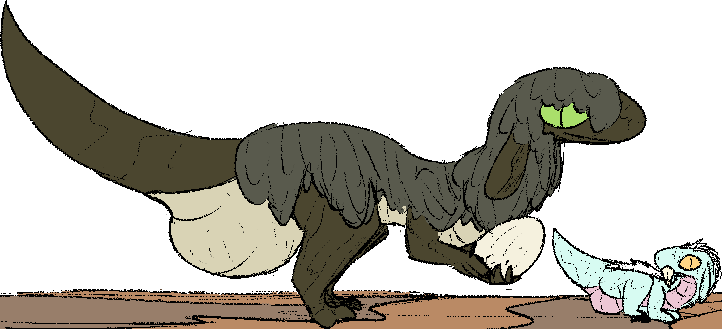
Reproduction and Life Cycle
Drekir are a sexually reproductive species and, more specifically, are a promiscuous R selective species. As drekir do not form pair bonds nor bond with any of their mates.
So it’s natural behavior for drekir to mate with whoever they take a fancy to at any given moment, often bouncing from one mate to the next. Over decades with your average drek usually meets with hundreds of different mates throughout their life, most of whom they never see again after a single instance. This promiscuity happens both with denmates and with complete strangers. In other words, they get around.
Pregnancy and the Egg
Drekir are reproductively active year round. Adult female drekir are induced ovulators and, as such, tend to have a high fertility rate in comparison to other ëldimor species or humans. When combined with a generally higher libido between male and female drekir when compared to humans or other ëldimor species, it’s relatively common for drekir to engage in frequent sexual activity and, relatively often, that results in an egg.
Upon successful fertilization a female will have a gestation period that lasts 19-24 days. Almost always a female will lay only one egg at a time. A females pregnancy does very little to directly impact or hinder them in their day to day functions and throughout most of a gestation period a female is generally able to and continues their day to day activities as normal. Though during the last few days of the gestation period a female is likely to become mildly affected by their gravid state, overall gravid drekir are generally unbothered and unhindered by their egg.
Additionally, upon fertilization gravid female drekir will stop ovulating for between 28-41 days, both encompassing the entire gestation period and upwards of two weeks after laying the egg. While a drek may continue to be sexually active both while being gravid and after laying an egg they are exceptionally unlikely to produce another egg until anywhere from 4-14 days after laying their prior egg. In an average year most female drekir may lay 3-6 eggs. Though if pushed to extremes one could lay upwards of 8 eggs in a single year, though that is unusual.
Once laid, an egg will take around 4-5 months before it properly hatches into a hatchling. Eggs themselves are vulnerable to temperature changes and environmental changes that might delay the hatching of the egg or lead to the death of the embryo, creating a dead egg. Typically 20-40% of the eggs laid within a year will never hatch.
The Hatchling Period
A drek hatchling is incredibly small upon hatching, often being smaller than a foot long and weighing in at under 8 pounds. The egg tooth a hatchling breaks from the egg with will stay with them until adolescence. During the next 7 years a hatchling will begin to grow and develop rapidly. Due to a lack of strong paternal care hatchlings are hard wired with powerful survival instincts and are generally capable of finding food and water themselves. These powerful instincts tend to cover up their early leaps and bounds in cognitive development.
The Youngling Period
The youngling period is roughly in the prepubescent stage of life from 8-14 years of age. This, like the previous period is a stage of rapid growth.
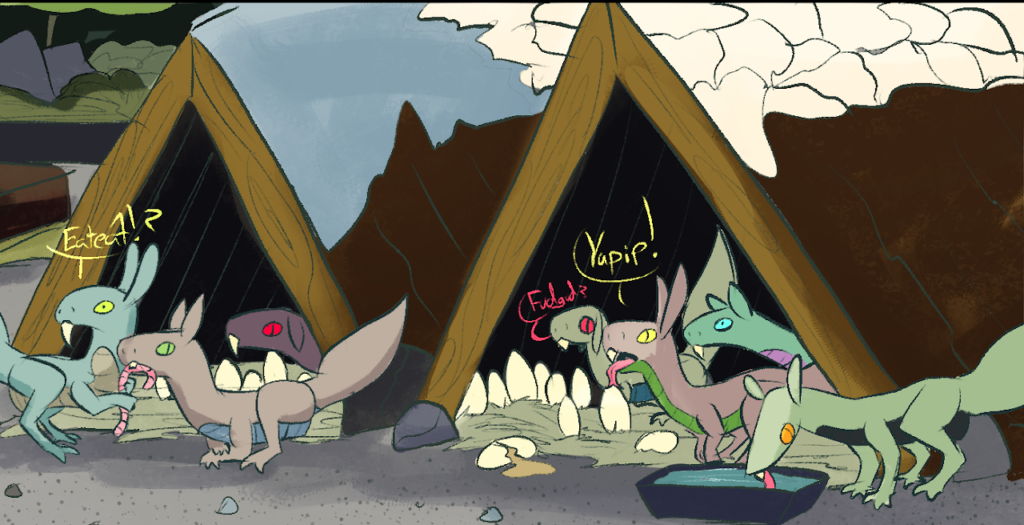
Secondary breed traits such as horns, fur, feathers, wing membranes, etc. tend to begin to grow and it is during this period that a dreks scales begin to change into a become fuller in color. It is during this period that a dreks powerful hatchling survival instincts begin also to wear off. So during this period you often start to see drekir begin talking and showing the cognitive development that had previously been veiled under their powerful, overriding instincts.
The Adolescent Period
The Adolescent period is a brief period from around 15-19 years of age and is, as the name would suggest, when a child begins to fully mature into an adult. It is commonly signaled by the falling out of the egg tooth, replaced by a more usable set of teeth. During this period a drek will undergo their final rapid growth spurt into an adult, and become biologically and physically mature.
The Young Adult Period
The Young Adult period generally refers to the period of roughly 20-50 years of age, during which a drek is mostly at their prime of health and youth. This period is generally when a drek is at their most physically able and mentally sharp and is the most significant period of their life before later declines. It is hard to tell the difference between drekir who may be decades apart in age during this period, often with a 20 year old and a 38 year old not looking noticeably different from a basic glance, with pheromones often being the key tool for drekir to distinguish age in this period. Though as a drek hits their mid to late 40s you would begin to see the first signs of darkening scales.

The Midlife Period
The Midlife period refers to the period roughly from 50-80 years of age, This is when a drek begins to have their aging become more apparent. The most notable trait is the blackening of scales and, if applicable, the silvering of fur or feathers.
While signs of medical decline may be apparent as early as a dreks late 40s they will gradually become more pronounced during this period. The ability of a drek to recover from physical problems begins to diminish as well. While a drek is clearly beginning to age during this period they are still generally very able and overall well.
The Elder Period
The Elder period is the last stage of life for a drek and lasts from 80 years until their death and is a marked period of general physical and/or mental decline as the drek ages further. This period is marked by the prevalence of pitch blackened scales and silver or fallen out feathers or fur when applicable. It is generally rare for drekir to live this far in the early awakening period though of course, many have regardless hit this old age.
The average maximum lifespan of the drekir tends to reach as high as 105 years, with a few drekir having made it to as old as 120 years.
The Drekir Breeds
Drekir, like all other creatures, have a variety of breeds that provide variation between different regions and their populations. So this chapter is going to discuss the locational nature of breeds and the different varieties of breeds amongst the main DragonScape drekir population as well as the subspecies of drekir.
The non genetic nature of breeds
The Variants of all creatures in the dragonscape are directly determined by location and the same applies with drekir. Drekir breeds are determined primarily by the location in which the egg is laid and not the breeds of the parents, as the sound of the environment and climate affects embryos within the egg to develop in a certain way. Once the egg is laid the breed of that drek will be determined regardless of the parents.
For example, if you were to have an arid drek and a tropical drek produce an egg and that egg was laid in an arctic region (however improbable this scenario is), then that egg would result in an arctic drek.
For 1st generation drekir, the previously human residents of the Americas hit by the Pulse, they become whatever breed would fit the environment that they would awaken into. So if you were to wake up in a desert, then you would awake as an arid drek, if you were to awake in a desert that turned into a tropical savanna (such as most of Argentina for example) then would awake as a tropical drek, etc.
Moreover in more extreme environments in some planar you may wind up with more distinct subspecies variants. While still drekir their anatomical and physiological differences are more extreme due to the more extreme situations of their environments and the resonance effecting them in different ways.
Drekir are the namesake of the whole species and the inhabitants of the many planar of the dragonscape. Be they in the Americas, Logáu, Agõrl or some other plane, the drekir are the most common species of Ëldimor in the dragonscape and these are the most common breeds that you can find on most planar! Though they are not the only breeds by any means! Just the most common.
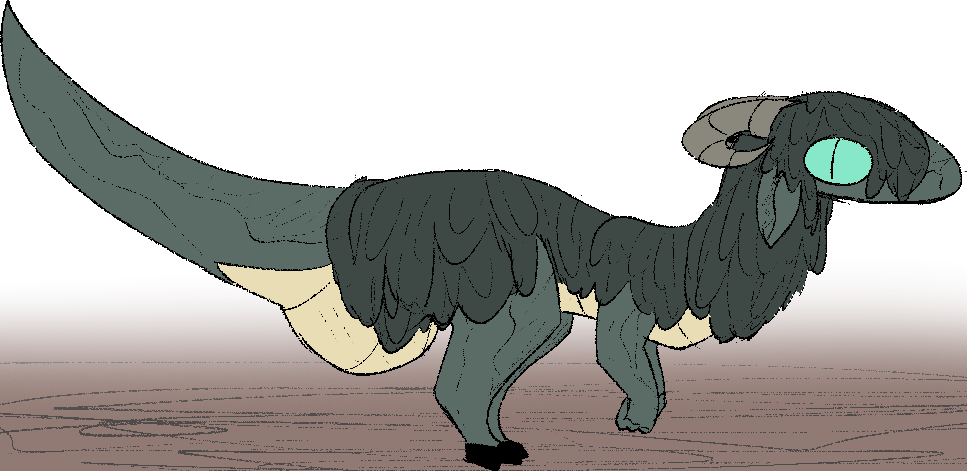
Drekirfijal: Temperate Drekir
Also referred to as forest drekir, temperate drekir occur in all temperate climates and ecoregions, from temperate forests and temperate rainforests to temperate barrens and grasslands.
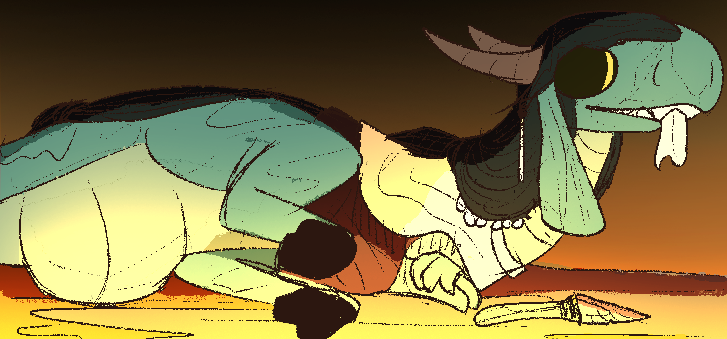
They are a common sized breed with the most notable feature of hard, two toed hooves. They are known to grow generally long, draping fur along their back and their neck that is almost always a similar or darker color to that of their scales. This fur helps preserve their body heat and keeps out cold precipitation such as rain or snow.
A trait that some (though not all) temperate drekir grow are also a variety of horns on various parts of the head, with varying sizes and numbers of horns that vary individually. Their primary scale tones are known to range from stone blues and purples to stronger teals and cyans, as well as a wide range of shades of green from deep forest greens to brighter grassier greens. Internally temperate drekir have a particularly strong circulatory system and generally have notably better endurance and stamina than most other breeds of drekir during intense physical activity. Combined with their hooves makes them very capable travelers.
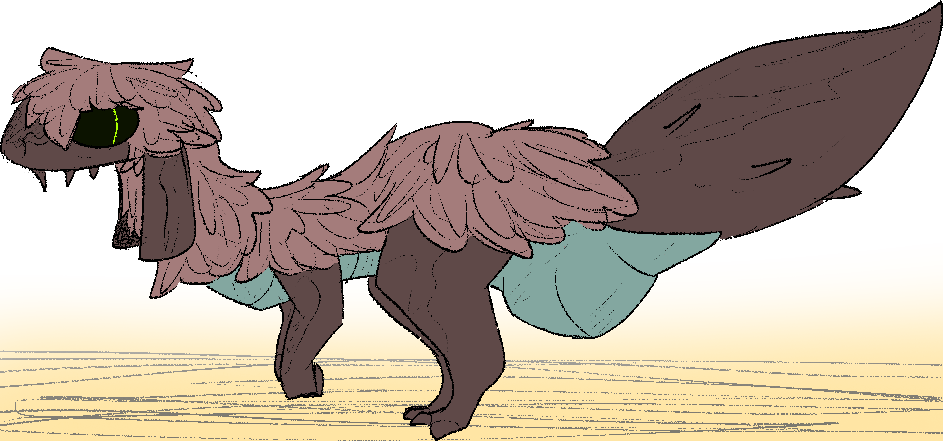
Drekirpura: Arid Drekir
Also referred to as desert drekir, arid drekir occur in all arid and semi arid climates and ecoregions, such as deserts, semi arid plains and forests, and shrublands. They are a common sized breed with their most notable and constant feature being a short, fat tail. combined with the spines that many (though not all) arid drekir grow all throughout their head, neck, back and tail.
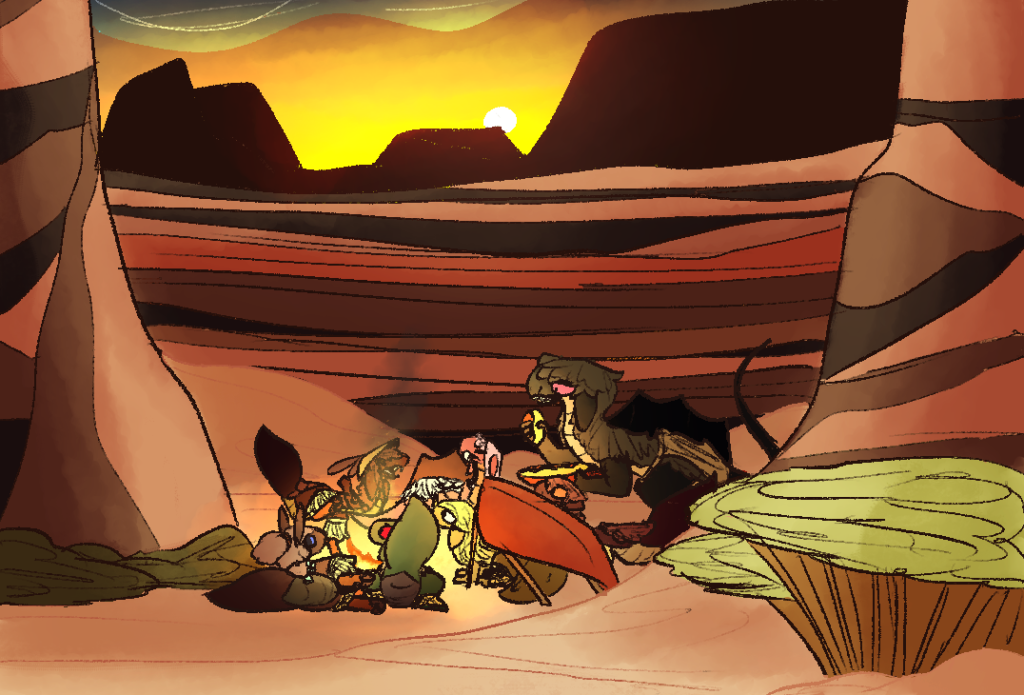
. They are known to grow a shaggier, curlier, and light fur on their back and neck, almost always of a similar or brighter tone than their primary scale color. Their primary scale tones range from from a variety of shades of red, brown, and sandy tans through to yellow and a variety of desert, shrubland greens.
In addition to being more able to withstand intense heat, their fat tails store fat that allows arid drekir to survive for far longer than any other breed of drekir without access to food, as they can survive off of the fat in their tail. These changes better help drekir to survive in the more arid and resource scarce environments they often find themselves in.
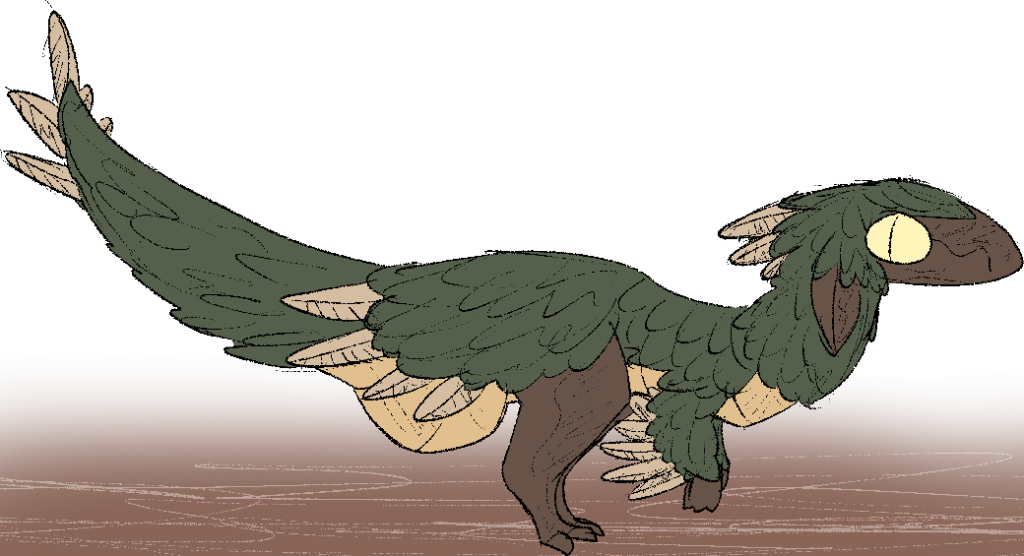
Drekirjuln: Tropical Drekir
Also known as feathered drekir, tropical drekir occur in subtropical and tropical climates and ecoregions. From tropical jungles and savannas to cloud forests and subtropical swamps or marshes.
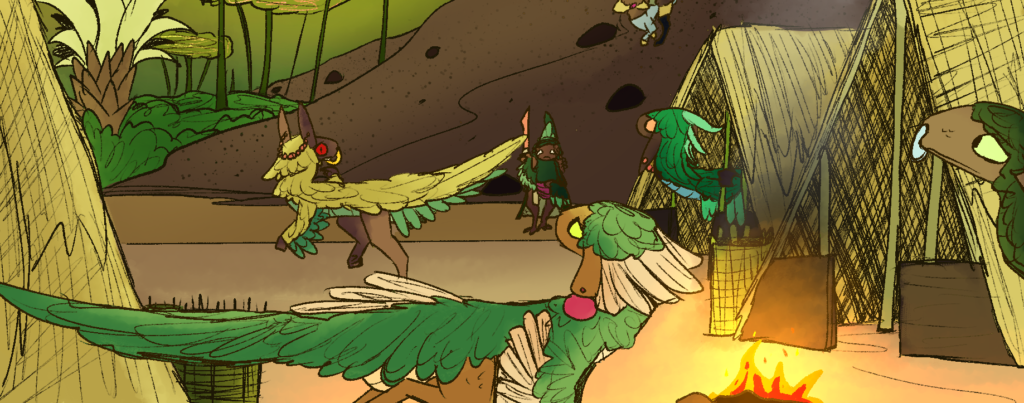
Tropical drekir are a small breed and their most immediately obvious trait are their feathers, with each tropical drek growing their own plumage of primary and secondary feathers along the head, neck, back arms and tail.
Feather coloration can range from green to blue and earthy yellows often with brighter colors of secondary feathers and usually red, tan, or brown scales underneath. The feathers, while also helping hide drekir from predators, also protects from various parasites found in many regions of the tropics. Tropical drekir are also generally more resilient to disease than other breeds of drekir, all of these traits assist them in surviving in the often muggy tropics of the DragonScape.
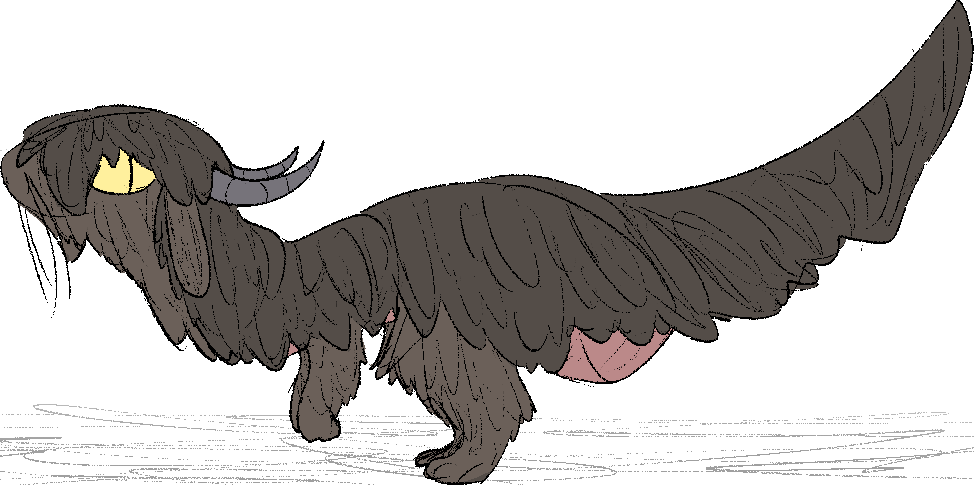
Drekirkal: Arctic Drekir
Also referred to as furred drekir, arctic drekir occur in subarctic and arctic climates and ecoregions. From taigas and tundra to The far northern cordilleras of the DragonScape.
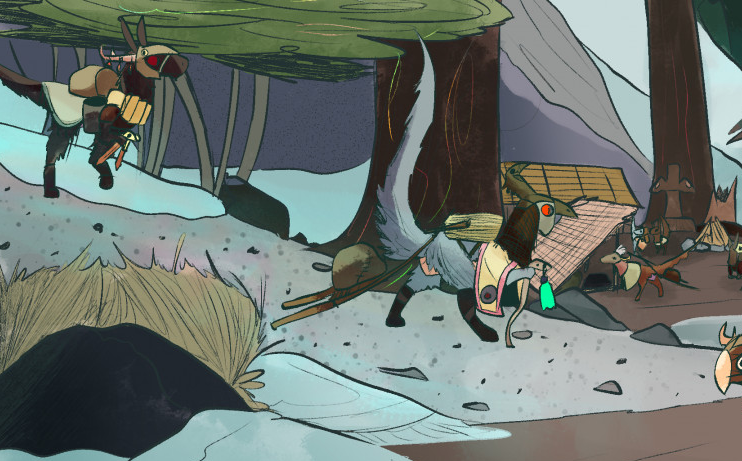
They are of a large breed with the main trait would be of course the fur that all arctic drekir grow, with a common though not universal secondary trait of growing horns. Their fur tones vary from russet and woody browns to faint, bluish whites and snow white colorations with the occasional blonde or black fur. The scales underneath are almost invariably gray, with an exception of the belly scales.
Another notable trait of arctic drekir is that they are warm blooded, which while requiring them to eat far more food than most other breeds of drekir, made worse with their larger size, allows them to far more easily withstand the intensely cold temperatures of their environment when combined with their fur and the clothing they generally make and wear. All of these traits combined allow arctic drekir to withstand some of the harshest climates in the americas that would kill other breeds of drekir within 10 minutes.
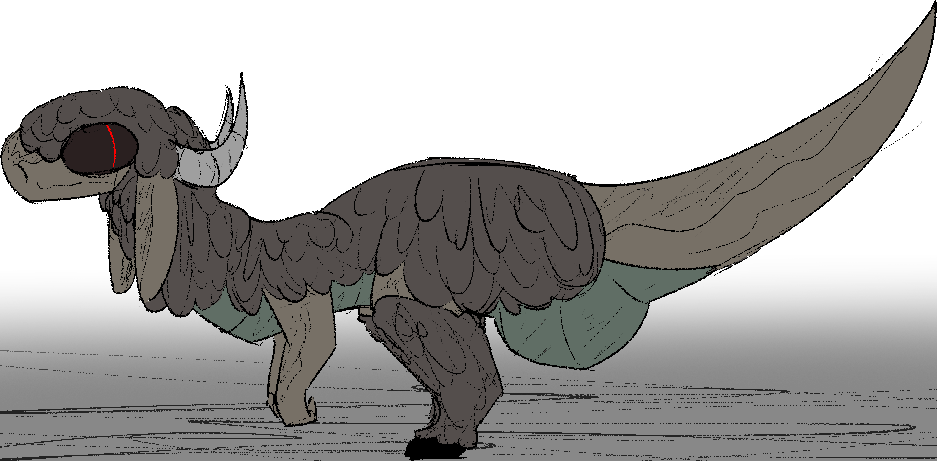
DrekirJalan: Alpine Drekir
Also known as mountain drekir, Alpine drekir are a more niche breed of drekir that occurs in Alpine mountainous regions. This includes montane forests and grasslands as well as upper alpine zones above the snowline.
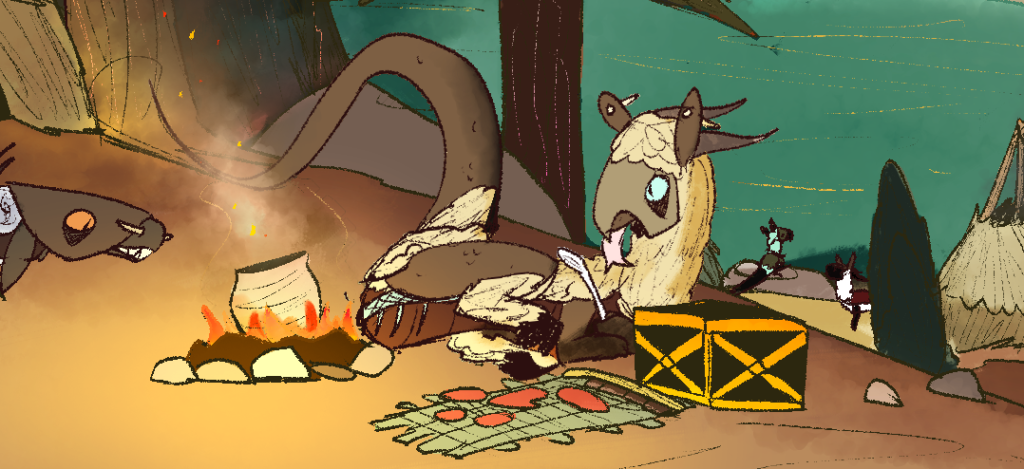
Alpine drekir are a small breed with a very notable trait in the wool and hooves that all alpine drekir grow, as well as the various sorts of horns that many (though not all) Alpine drekir grow. Their wool is generally grayscaled and their scales brown, gray, blue or black.
Like arctic drekir, alpine drekir fall under the minority of warm blooded breeds, which helps them survive the often very hostile, and cold environments in the high mountains of the DragonScape. Alpine drekir also have larger lungs with more efficient bronchiole that allow them to breathe at incredibly high altitudes without the aid of specialized breathing equipment. These qualities allow these drekir to survive in some of the most difficult environments in the DragonScape, such as the peaks of the Andes and Rockies Mountain ranges.
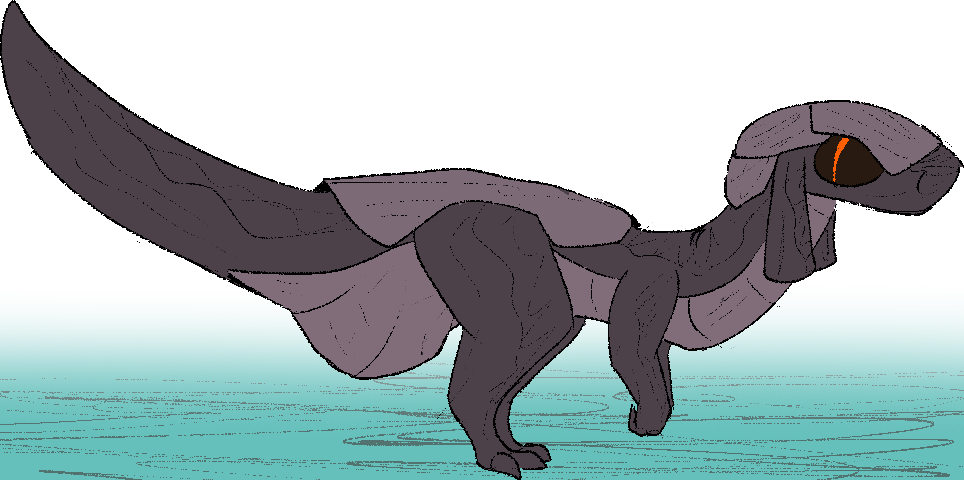
Drekirsivilão: Drãlkir
Also known as Caste Drekir, though will be referred to as Drãlkir, Drãlkir are an artificial breed of drekir created through the manipulation of the Prejager and only occur from eggs laid within the walls of Sivilão Õfuthar.
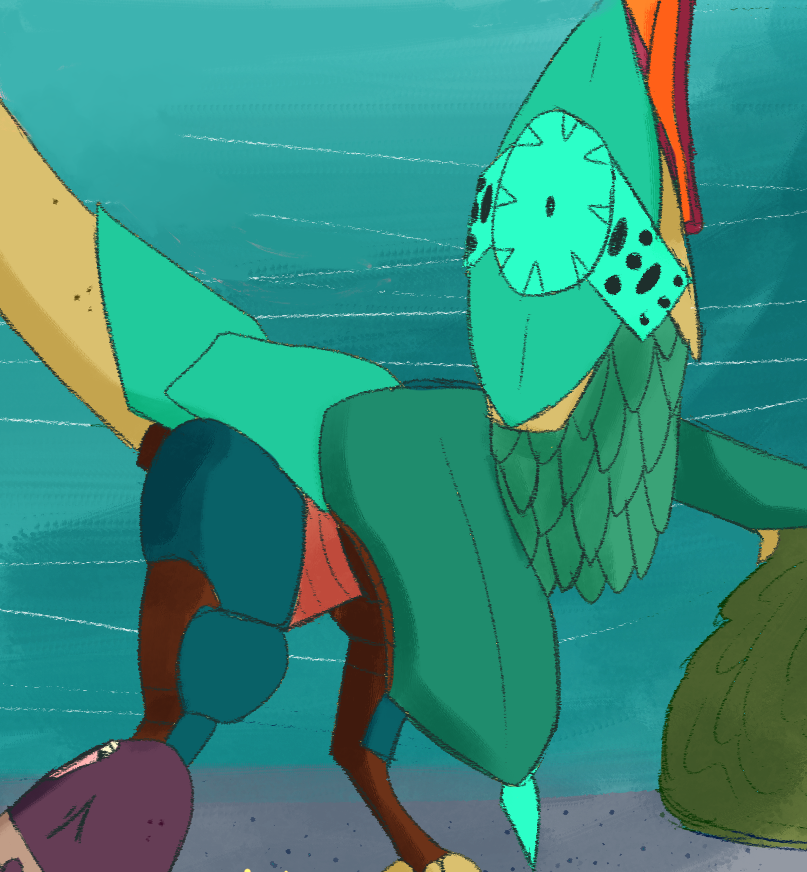
Drãlkir, being modified to fit the realm of their lay and the labor expected of them, are similar to foreign drekir, however are known to grow armored plates along the head, neck, and back. Their scale tones are rigidly set by the realm they originate from and the colors mandated by the Prejag of the õfuth they live within. They are a large breed of drekir.
While not boasting many strong adaptations outside of the protective plates many grow, their larger size aids them with more strength, both for the labor of their caste ãf õheduradir thalmvar and in the common conflicts against other sivilão õfuthar
and the various drekir heretical tribes they encounter in the wildernesses of the Dragonscape. They are more common than foreign drekir though, overall with the broader population of the dragonscape, are a minority breed amongst the drekir.
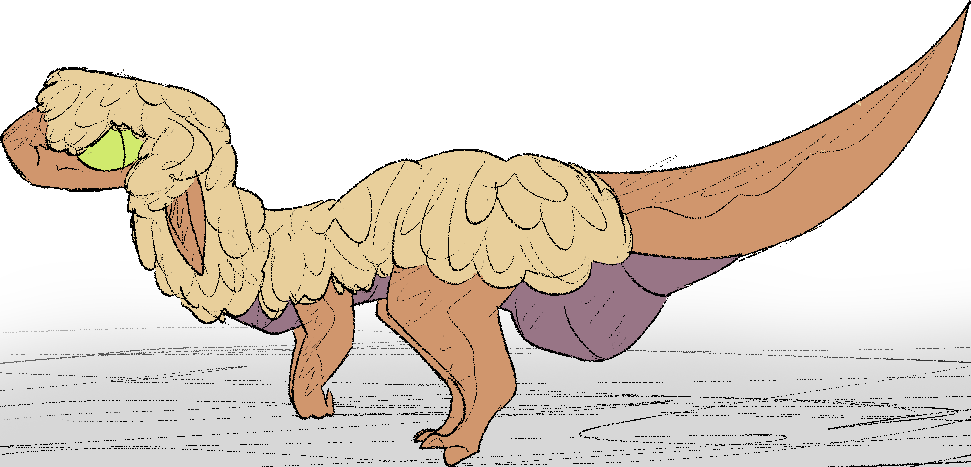
Drekirerlen: Foreign Drekir
Also referred to as colonial drekir, foreign drekir do not hatch naturally in the dragonscape. Rather, they are a result of the drekification of humans in the post awakening, always colonial humans of some type, through mana exposure. It is common to find this breed of drekir, sure enough, in human colonial outposts as the residents slowly drekify over time.
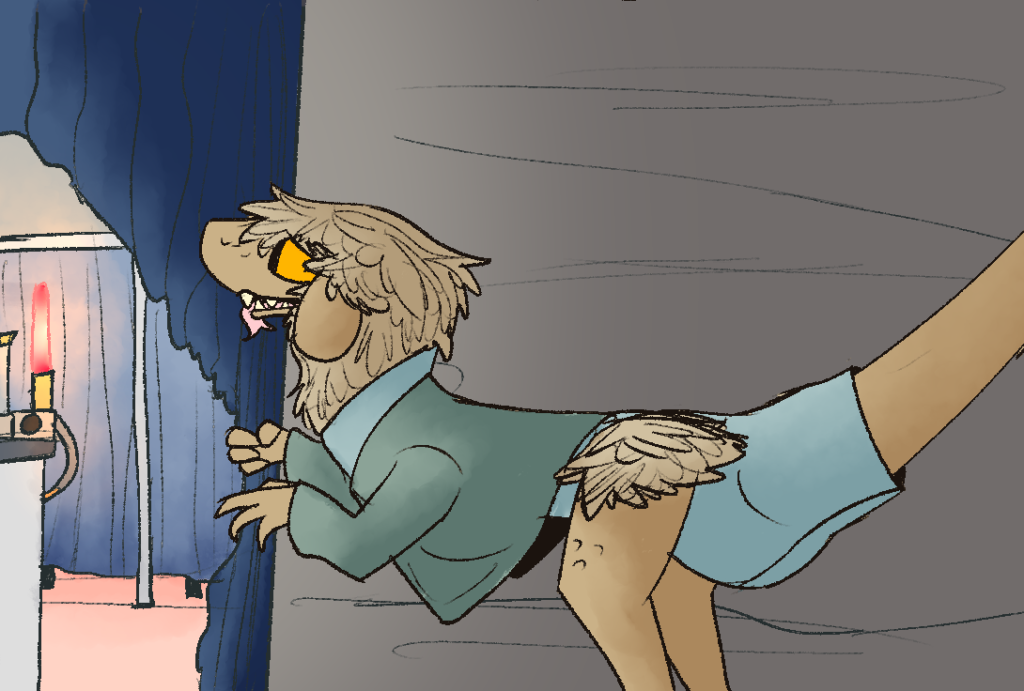
They are a common sized breed and are notable for… nothing. They are essentially a featureless drek that lack any sort of horns, odd tail, fur, feathers, etc. They are just a drek with basic features, their scales can vary to near any palette of colors from neon to pastel tones to natural tones and everything inbetween. While new foreign drekir who had just drekified are bald, they will all grow fur along their back and necks, often heavily varied due to their foreign origins.
These drekir, as they do not occur naturally through reproduction, are a rare breed of drekir in the dragonscape and the only breed of drekir to occur, naturally or otherwise, outside of the DragonScape in the human world. Though that is a topic for another day.

One thought on “Drekir Biology, Ergonomics, and Breeds”